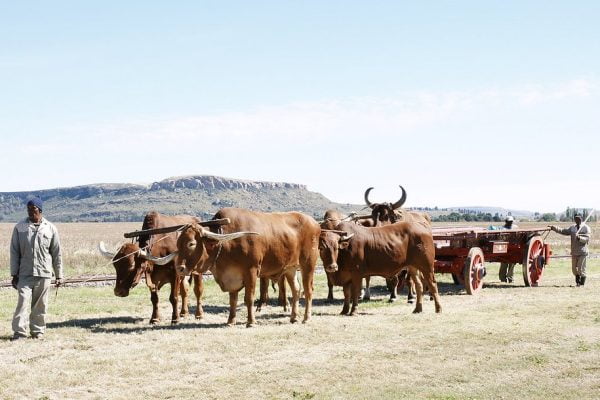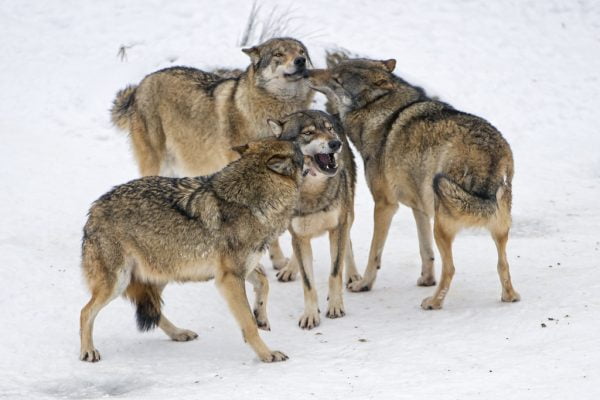Cattle, with their gentle mooing and imposing presence, have played a significant role in human civilization for millennia. These social creatures graze pastures, roam vast fields, and hold a vital place in the agricultural landscape. Beyond their historical and economic importance lies a fascinating facet of language – the diverse collective nouns used to describe them, each offering a glimpse into their social dynamics and the complexities of their world.
A Guide to Cattle’s Collective Nouns
Unlike animals with singular collective nouns, cattle boast a diverse vocabulary, each term reflecting the specific context and the group’s purpose or movement:
- Herd: This widely used and familiar term signifies a large group of cattle, typically grazing together in a pasture. It evokes a sense of shared space, collective purpose, and the peaceful image of these gentle giants enjoying their natural habitat.
Example: As the sun dipped below the horizon, casting an orange glow across the vast plains, a herd of cattle grazed peacefully. Their rhythmic chewing and gentle movements created a scene of tranquility, highlighting their dependence on and connection to the land.
- Drove: This term emphasizes the movement of cattle from one place to another, often associated with herding them for specific purposes. It evokes a sense of directed movement, controlled passage, and the logistical efforts involved in cattle management.
Example: Dust rose from the trail as a drove of cattle was herded down the road. The skilled cowboys navigated the terrain, ensuring the cattle moved efficiently towards their destination, showcasing the intricate relationship between humans and these animals.
- Drift: Similar to a drove, this term signifies a group of cattle being moved from one place to another, often by a single individual. It evokes a sense of a smaller, more loosely organized group, and potentially a less controlled movement compared to a drove.
Example: As dawn painted the sky, a rancher carefully guided a drift of cattle towards a new pasture. The quiet communication and understanding between the rancher and the cattle highlighted the unique bond built through experience and care.
- Mob: This term, while less common, can be used to describe a large group of cattle, sometimes with a connotation of uncontrolled movement or gathering. It evokes a sense of a large, potentially restless group, highlighting the need for careful management and understanding of cattle behavior.
Example: During a sudden storm, a mob of cattle huddled together for shelter, their movements becoming erratic in response to the unpredictable weather. This situation emphasized the importance of providing adequate protection and understanding the potential reactions of large groups of cattle in various situations.
Interesting Facts About Cattle
Understanding these collective nouns deepens our appreciation for the complex lives of cattle. But venturing deeper reveals their fascinating social structure, ecological role, and the challenges they face:
Social Bonds: Cattle are highly social animals, exhibiting strong bonds within their herds. They form hierarchies, recognize individual members, and communicate through vocalizations and body language. Understanding these social dynamics is crucial for their well-being and responsible management.
Grazing Guardians: Cattle play a key role in maintaining healthy ecosystems. By grazing, they contribute to the control of weeds and brush, while also helping to disperse seeds and promote plant growth. Recognizing their ecological contributions is crucial for sustainable land management practices.
Facing Challenges: Cattle face various challenges, including habitat loss, disease outbreaks, and climate change. Additionally, ensuring their welfare and ethical treatment throughout their lives is essential. Addressing these challenges requires continued research, responsible farming practices, and public awareness.
A Legacy of Connection: Throughout history, cattle have been instrumental in human development, providing food, clothing, and other resources. Understanding this legacy fosters appreciation for their historical significance and the ongoing responsibility of caring for these remarkable creatures.
Final Thoughts
From the peaceful “herd” grazing in sun-drenched pastures to the carefully guided “drove” on its journey, the diverse collective nouns for cattle offer a glimpse into their multifaceted lives and vital role in the world. By appreciating these terms, understanding their social complexities and ecological contributions, and addressing the challenges they face, we can ensure the continued legacy of these magnificent creatures and their harmonious “moo-vement” within the intricate tapestry of life.
Also Read:






